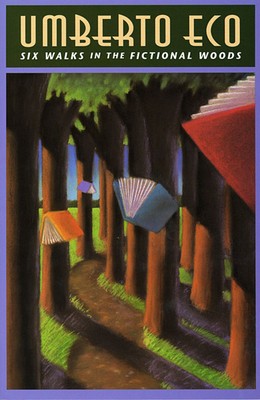Svarbiausia
- AKCIJOS
- Naujienos
- Top
- Greitai pasirodys
- Vadovėliai ir pratybos
-
Išpardavimas

- Knygos anglų kalba
- Skaitytos knygos
- Elektroninės knygos
- Žaislai ir žaidimai
Kategorijos
-
AKCIJOS
AKCIJOS
Grįžti- GROŽINĖS literatūros knygos - extra nuolaidos iki -40%!
- NEGROŽINĖS literatūros knygos - extra nuolaidos iki -40%!
- VAIKŲ IR JAUNIMO literatūros knygos - extra nuolaidos iki -40%!
- LAUKO ŽAISLAI IR ŽAIDIMAI - IKI EXTRA 25% nuolaida!
- STALO ŽAIDIMAI - IKI EXTRA 25% nuolaida!
- DĖLIONĖS - IKI EXTRA 25% nuolaida!
- Žiūrėti daugiau
-
Grožinė literatūra
-
Populiarioji psichologija
-
Literatūra vaikams ir jaunimui
Literatūra vaikams ir jaunimui
Grįžti- Knygelės kietais lapais
- Knygelės su garsais
- Knygos su atvartais ir iškylančiom figūrom
- Žiūrėti daugiau
- Enciklopedijos ir žinynai vaikams
- Pažintinė literatūra pradinukams
- Kalbų mokymo priemonės vaikams
- Žiūrėti daugiau
- Kakės Makės naujienos
- Perkamiausios Kakės Makės knygos
- Kakės Makės asortimentas 0-3 metų vaikams
- Žiūrėti daugiau
- 1 kl. rekomenduojamos knygos
- 2 kl. rekomenduojamos knygos
- 3 kl. rekomenduojamos knygos
- Žiūrėti daugiau
-
Pomėgiai
- Šeima, sveikata
-
Knygos anglų kalba
Knygos anglų kalba
Grįžti- Biografinė grožinė literatūra (anglų k.)
- Detektyvai ir paslapties romanai (anglų k.)
- Erotinė literatūra (anglų k.)
- Žiūrėti daugiau
- Grafiniai romanai ir komiksai: tipai (anglų k.)
- Grafiniai romanai ir komiksai: žanrai (anglų k.)
- Komiksų juostų (mažųjų komiksų) rinkiniai (anglų k.)
- Informaciniai, pagalbiniai leidiniai vaikams ir paaugliams (anglų k.)
- Mažiesiems skirti leidiniai: paveikslėlių ir veiklos knygelės (anglų k.)
- Mokomoji literatūra (anglų k.)
- Žiūrėti daugiau
- Antgamtiniai reiškiniai (protas, kūnas, dvasia) (anglų k.)
- Saviugda ir asmeninis tobulėjimas (anglų k.)
- Šeima ir sveikata (anglų k.)
- Antikvariniai daiktai ir kolekcionavimas (anglų k.)
- Gamta ir laukinis pasaulis: pažintinė literatūra (anglų k.)
- Gyvensenos ir asmeninio stiliaus vadovai (anglų k.)
- Žiūrėti daugiau
- Ekonomika (anglų k.)
- Finansai ir apskaita (anglų k.)
- Pramonės ir pramonės sektorių tyrimai (anglų k.)
- Žiūrėti daugiau
- Antikiniai, klasikiniai ir viduramžių tekstai (anglų k.)
- Biografijos ir negrožinė literatūra (anglų k.)
- Literatūra: istorija ir kritika (anglų k.)
- Žiūrėti daugiau
- Karyba ir krašto apsauga (anglų k.)
- Politika ir valdymas (anglų k.)
- Psichologija (anglų k.)
- Žiūrėti daugiau
- Duomenų bazės (anglų k.)
- Grafikos ir skaitmeninių medijų taikomosios programos (anglų k.)
- Informacijos technologijos: bendrieji klausimai (anglų k.)
- Žiūrėti daugiau
- Architektūra (anglų k.)
- Atlikimo menas (anglų k.)
- Fotografija ir nuotraukos (anglų k.)
- Žiūrėti daugiau
- Aktyvus laisvalaikis, persekiojimo lenktynės (anglų k.)
- Atletika, gimnastika ir giminingos sporto šakos (anglų k.)
- Kamuolio sporto šakos, kamuolio žaidimai (anglų k.)
- Žiūrėti daugiau
- Astronomija, erdvė ir laikas (anglų k.)
- Biologija, gyvybės mokslai (anglų k.)
- Chemija (anglų k.)
- Žiūrėti daugiau
- Chirurgija (anglų k.)
- Ikiklinikinė medicina: pagrindinės disciplinos (anglų k.)
- Klinikinė medicina ir vidaus ligos (anglų k.)
- Žiūrėti daugiau
- Aplinkos inžinerija ir technologijos (anglų k.)
- Biocheminė inžinerija (anglų k.)
- Civilinė inžinerija, matavimai, statybos ir jų priežiūra (anglų k.)
- Žiūrėti daugiau
- Atskirų jurisdikcijų teisė ir specialios teisės sritys (anglų k.)
- Jurisprudencija, bendrieji klausimai (anglų k.)
- Tarptautinė teisė (anglų k.)
-
Dalykinė literatūra
-
Vadovėliai ir pratybos visoms klasėms
Vadovėliai ir pratybos visoms klasėms
Grįžti- Anglų k. mokymo priemonės mokyklai
- Vokiečių k. mokymo priemonės mokyklai
- Rusų k. mokymo priemonės mokyklai
- Žaislai, žaidimai
-
Kalendoriai
-
Dovanos
-
KNYGOS.LT 2023 M. PERKAMIAUSIOS KNYGOS
- Kanceliarinės prekės
- Skaitytos knygos
- Elektroninės knygos






Atsiliepimai